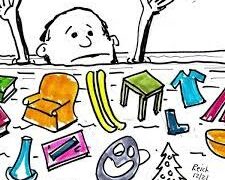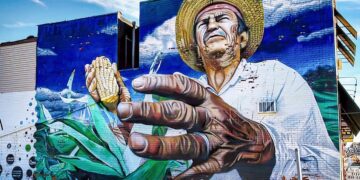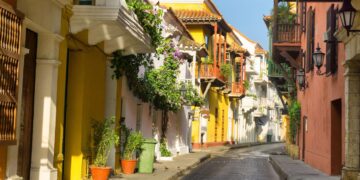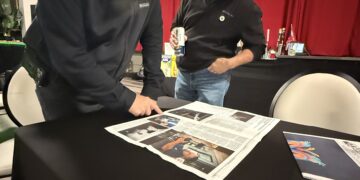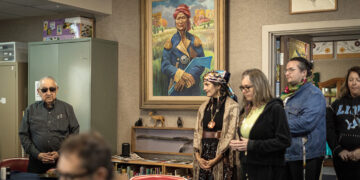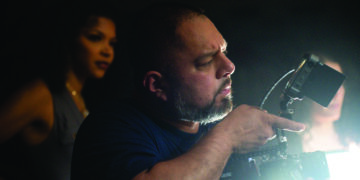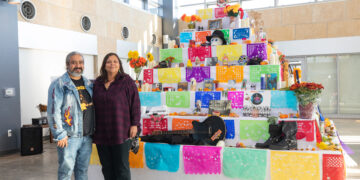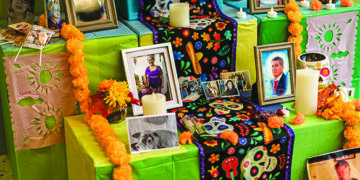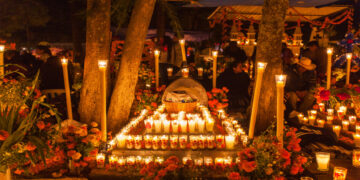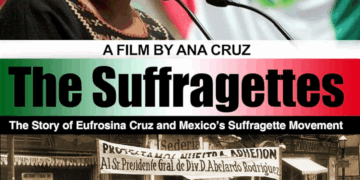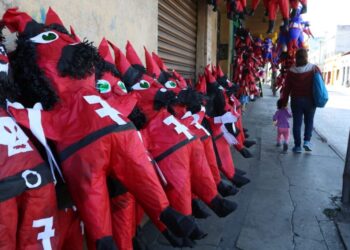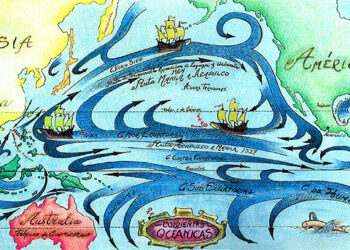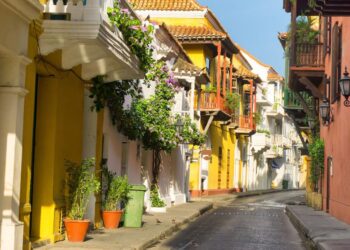- Ofelia Saenz
- Alejandro Ugalde
- Culture & Arts
Houston-born artist and Detroit muralist Peter Daniel Bernal has always felt he was a Tejano through and through, except for one thing – he doesn’t speak Spanish. It was something that conflicted his sense of identity growing up, but has since become a token of his experience as a Chicano.
His new art exhibit “No True Mexican,” which opens at Hatch Art Gallery on Nov. 12, attempts to push the conversation of identity forward, in the Latino community and beyond. It questions our assumptions about what it means to identify with a culture, shines a torch over the crevices of our misconceptions, and nudges the narrative of Latino identity toward our ancestral native connection.
Bernal’s paintings are less didactic than they are exploratory, and although they’re not autobiographical, the stories they tell are best understood within the context of his own history.
Bernal’s grandfather was a sharecropper in South Texas. His mother grew up laboring in her family’s fields and speaking only Spanish. Although she was a natural-born U.S. citizen, she suffered the same hardships and racism that Mexican immigrants suffered. Determined to protect her sons from the same fate, she chose to raise them without teaching them Spanish.
“I kind of felt like I didn’t belong to my own community aside from my family because of my Spanish,” says Bernal as he reflects on the experience. “I want people to understand that when I can’t speak Spanish, it’s not that I don’t want to, it’s historical. And I have to stop apologizing for it.”
In confronting the issue, he also pushes back on its irony. “I have to say, Spanish is a Colonial language, if anyone is going to give me a hard time, they should give me a hard time for not speaking Coahuiltecan or Nahuatl. It’s infuriating to me.”
The passion that Bernal mines in exploring issues of identity and culture are often amplified in his paintings, as he beautifully restores humanity to those who suffer at the hands of racism, fear and greed.
The paintings of the exhibit vary from smaller, concentrated and heavily detailed pieces that he mostly created during the pandemic lockdown, to larger more physically imposing ones. There’s an intensity in storytelling as much as there is in technique. He often paints, then scrapes off an area, then paints it again, repeating the process again and again until the image reveals the message.
“It’s a slow process,” says Bernal. “But it’s deliberate.”
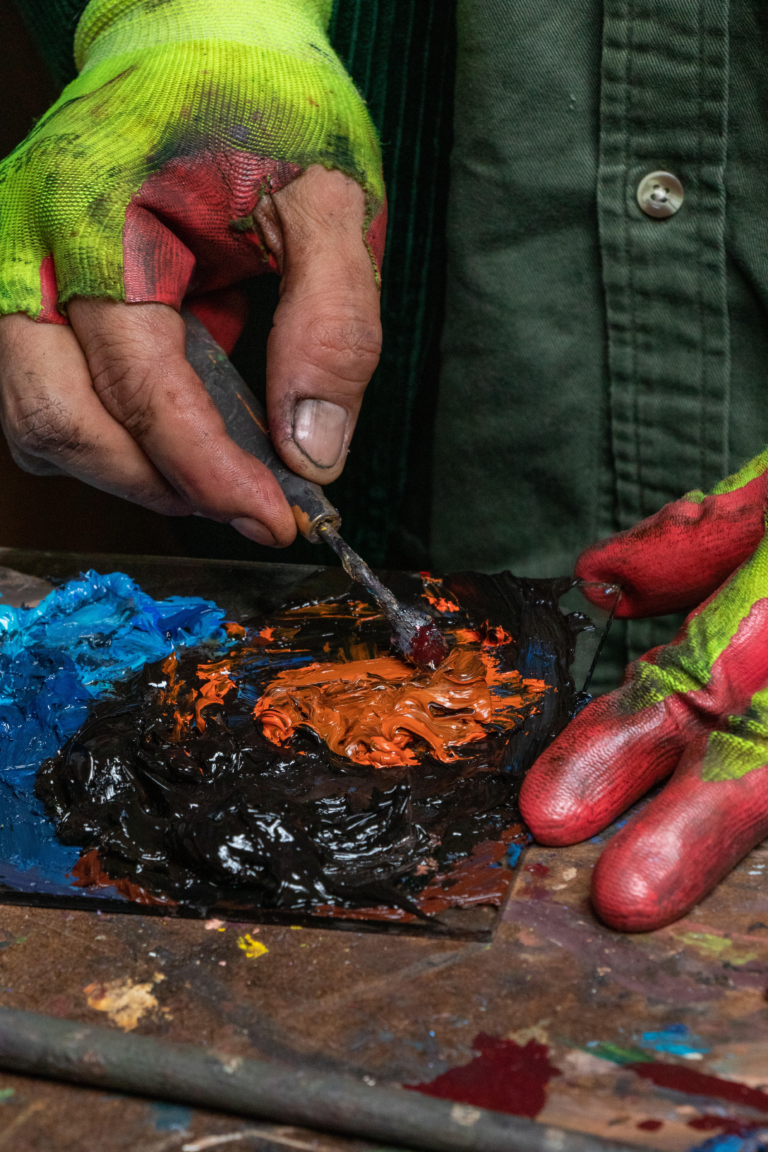
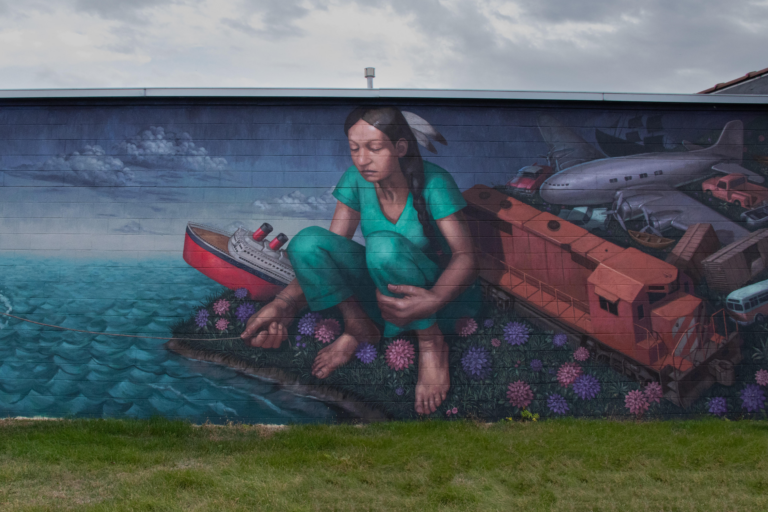
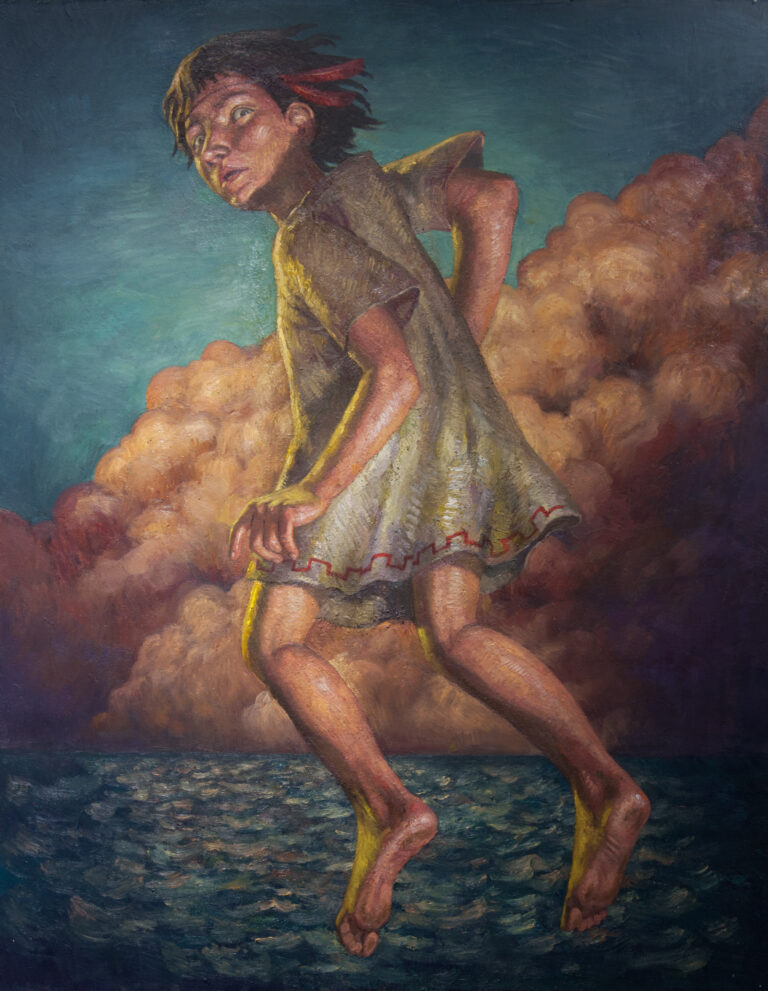
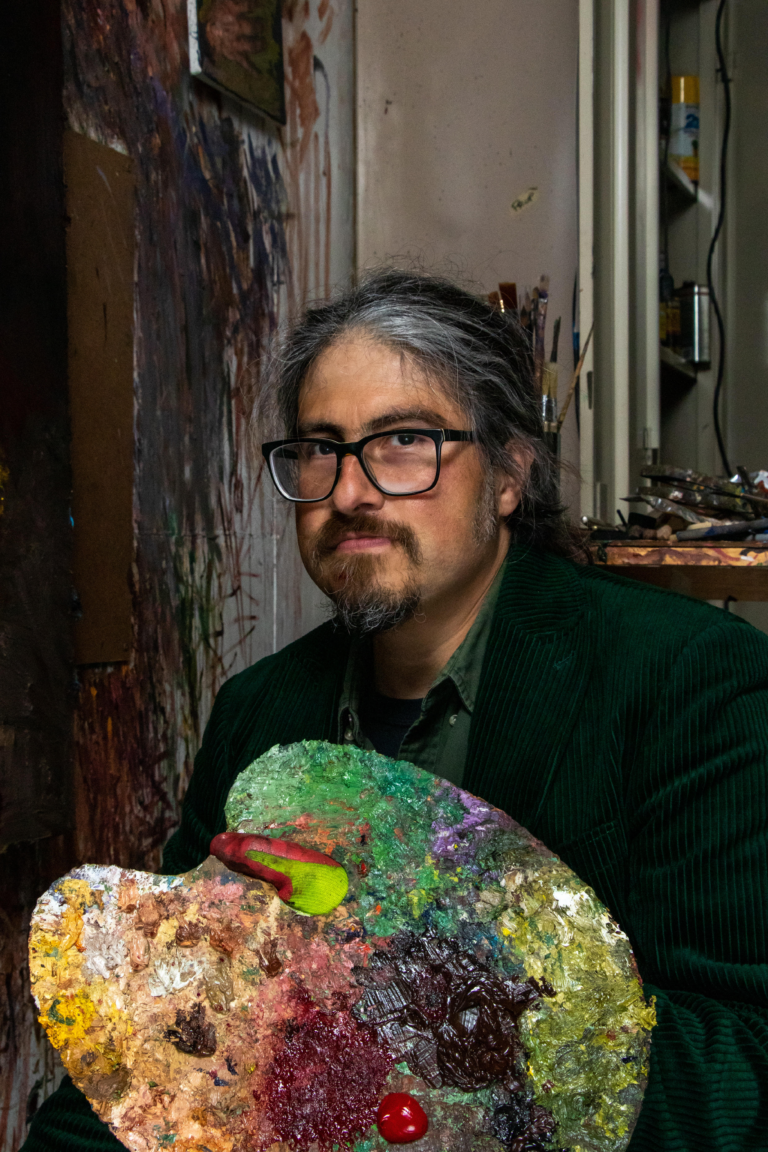
Although Bernal’s paintings are often inspired by real-life stories from the news or people from his life, they’re sometimes fictionalized accounts based on the impact of historical events. According to Bernal, the painting “It Happened” gives the viewer a final look into the desperate eyes of a young Aztec girl as she leaps from a ship. We don’t see the ship on the canvas – the focus is entirely on her fear and sorrow.
Other paintings, however, are rooted in very real and heartbreaking stories. In “No More Deaths,” a woman rests on a rock, sweating and exhausted from walking through the desert to cross the border from Mexico into the U.S. The painting references actions taken against a charity group charged with leaving supplies in the desert, and the brutality of undermining efforts to help human beings survive a deadly walk.
The “No True Mexican” exhibit is likely to spur conversation about identity and belonging from a variety of standpoints. And although Bernal points out that he speaks from his own lived experience as a Chicano, he acknowledges the universality of what it feels like to be excluded – to have one’s sense of identity questioned. He pushes back on the idea that identity is something to be ascribed by others rather than claimed by oneself.
“There’s all kinds of stereotypes of certain groups,” he says. “If you step outside of that stereotype, you’re seen as being less than that culture. I hope I can connect to people who aren’t Latino in that regard, because a lot of people feel left out of certain things.”
“No True Mexican” opens Saturday, Nov. 12 and runs through Dec. 10. For more information about the exhibit, visit hatchart.org. To learn more about the artist, visit peterdanielbernal.com.
Ofelia Saenz is a native of Southwest Detroit and a writer, marketer and food entrepreneur. She writes about entertainment, arts, culture and other human-interest stories for EL CENTRAL.



